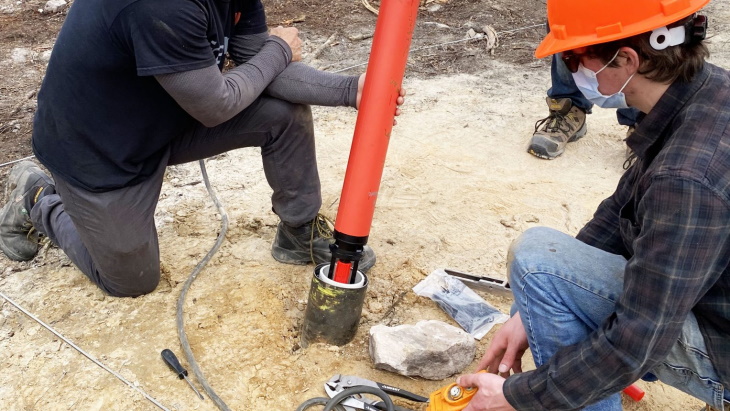Socialist Cybernetics in Allende's Chile -
by E MEDINA - Cited by 116 - Related articles in Allende's Chile*. EDEN MEDINA. Abstract. This article presents a history of 'Project Cybersyn', an early computer network developed in Chile during the .... 9 Norbert Wiener, Cybernetics: Or Control and Communication in the Animal and the Machine .... by this new application of his work, invited Beer to visit him at MIT.
PROJECT CYBERSYN
#SOCIALIST #SELFMANAGEMENT THROUGH #AI, #CYBERNETICS, #ROBOTICS,. WORKERS CONTROL OF PRODUCTION THROUGH
#AUTOMATION
IN THE #GRUNDRISSE #MARX POSTULATES THAT WITH THE ADVENT OF TECHNOLOGY FREEING PEOPLE'S TIME, AND HIS THEORY OF VALUE IS BASED ON TIME NOT SKILL, THAT IS SPENT IN PRODUCTION OF EXCHANGE VALUE.
AS PEOPLE HAVE MORE TIME TO THEMSELVES WITH THE EIGHT HOUR DAY THE CONTRADICTION BECOMES NOT JUST THAT CAPITALISM IMPOVERSHIVES YOU ECONOMICALLY BUT IT STEALS YOUR TIME AS WELL AND USES IT AGAINST YOU
INSTEAD OF UNEMPLOYMENT BY AI AND ROBOT WE SHOULD HAVE
THE FOUR HOUR DAY, FOUR DAY WEEK, FORTY HOURS PAY
IN FACT WE COULD ABOLISH MONEY WITH THE NEW FINTECH
AND WE COULD FREE UP EVEN MORE TIME TO WORK ONLY TEN HOURS A WEEK FOR SOCIAL PRODUCTION FOR CREATING OUR COMMONWEALTH
WHILE THE TECHNOLOGY CREATED COULD FREE US FROM TIME SPENT IN THE MACHINE, INSTEAD WE COULD WORK LESS AND PLAY MORE.
BUT CAPITALISM PREVENTS THAT, IT SLOWS US DOWN AND INSTEAD OF FREEDOM WE GET UNEMPLOYMENT
HERE IS THE SOCIALIST VIEW OF #TECHNOLOGY AS AN AID FOR SELF MANAGEMENT OF OUR WORKPLACES IT WAS AN EXPERIMENT CONDUCTED IN ALLENDE'S CHILE BY NORBERT WIENER AND
STAFFORD BEER
HERE IS THE PDF OF EDEN MEDINA'S BOOK
Cybernetic Revolutionaries: Technology and Politics in Allende's Chile
However, the MIT mathematician Norbert Wiener, one of the originators of the field, offers one of the most-cited definitions. In 1948 he described cybernetics as the study of “control and communication in the animal and the machine.”14 Cybernetics often mixed metaphors from engineering and biology to describe the .
HER PHD THESIS WHICH THE BOOK IS BASED ON
]The State Machine: Politics, Ideology, and Computation in Chile ... - Core
https://core.ac.uk/download/pdf/4403874.pdf
The MIT Program in Science, Technology and Society generously provided three years of tuition and ... to Allende's Chile and several years later allowed me to teach this history to his undergraduate ...... Allende period. 8 Norbert Wiener, Cybernetics: Or Control and Communication in the Animal and the Machine, 2nd ed.
The Cybersyn Revolution -
Jacobin
Apr 27, 2015 - Project Cybersyn was a bold technological project tied to a bold political project. It emerged in the context of Chile's peaceful road to socialism: Salvador Allende had won the Chilean presidency in 1970 with a promise to build a fundamentally different society. His political program would make Chile a ...
Neither vision was fully realized—Allende's government ended with a violent military coup; the system, known as Project Cybersyn, was never completely implemented—but they hold lessons for today about the relationship between technology and politics. Drawing on extensive archival material and interviews, Medina ...
Andy Beckett: The forgotten story of Chile's 'socialist internet ...
https://www.theguardian.com/technology/2003/sep/08/sciencenews.chile
Sep 8, 2003 - In the many histories of the endlessly debated, frequently mythologised Allende period, Project Cybersyn hardly gets a footnote. Yet the personalities involved, the amount they achieved, the scheme's optimism and ambition and perhaps, in the end, its impracticality, contain important truths about the most ...
Project Cybersyn - Stafford Beer's Cybernetic Science Fictions ...
Video for project cybersyn
Free As In Beer: Cybernetic Science Fictions - A paper delivered at the 2009 Pacific Ancient and Modern ...
Project Cybersyn: Chile & the Socialist Internet - YouTube
Video for project cybersyn▶ 2:09:34
https://www.youtube.com/watch?v=JGTEoJI5-Y4 Jan 31, 2015 - Uploaded by CybrSalon
Cybersalon & Centre for the Study of Democracy 6th December - University of Westminster, London In Chile ...
Cybersyn: Control the economy from one central room -
Oct 31, 2015 - Uploaded by Max Zamora
Under Salvador Allende's socialist government, a project was under way called Project CyberSyn or Proyecto ...
Feb 21, 2009 - My colleague Lokman Tsui at the Berkman Center kindly added me to the Harvard-MIT-Yale Cyberscholars working group and I attended the second roundtable of the year yesterday. These roundtables typically comprise three sets of presentations followed by discussions. Introducing Cybersyn
- Marginal REVOLUTION
Dec 7, 2009 - Cybersyn was a project of the socialist government of Salvador Allende (1970-1973) and British cybernetic visionary Stafford Beer; its goal was to control the Chilean economy in real-time using computers and "cybernetic principles." ... The two computers supposedly used to run the ...
Project Cybersyn – A failed experiment in Big Data and Socialism in ...
https://www.peerlyst.com › Explore › Posts
Feb 21, 2018 - private, systems, free - I read about this a few months back or maybe a year, I read way too much to remember all the details. It is a story about a new governm.
Mar 28, 2008 -
Cybersyn, a project that included a clunky mainframe computer and a network of telex machines, was in the early 1970s a part of an experiment to help manage Chile's economy.
What were the general motivations of Project Cybersyn?
What were the general motivations of Project Cybersyn?
- Quora
Good ideas that didn't pan out, part 2: Project Cybersyn
Sep 18, 2014 - Part 2: Project Cybersyn. Around the time the first email was sent, not long after ARPANET, the Internet's predecessor, was first connected, a group of high-minded computer scientists in Chile tried to run their country's economy by computer. In 1971, the Chilean government of Salvador Allende signed a ...
Project Cybersyn and the Origins of Algorithmic Life | Open Geography
https://opengeography.wordpress.com/2015/03/09/cybersyn-and-algorithmic-life/
Mar 9, 2015 - One of the left's commonly accepted stories about neoliberalism is that it got some of its first real-world tests in Pinochet's Chile in the early 1970s. Following a coup and the violent end to socialist Salvador Allende's government (in which Allende took his own life in the Presidential Palace), probably with the ...
Project Cybersyn | “At last, el pueblo” | dpr-barcelona
https://dprbcn.wordpress.com/2010/08/27/project-cybersyn-2/
Aug 27, 2010 - According to the research project CYBERSYN, Cybernetic Synergy, internationally, the country was viewed with curiosity and mistrust, and in terms of internal affairs, different political groups wasted no time in planning a strategy to produce the debacle of the Socialist government, joining forces with the ...
. Computers and the Internet: A global history. Chile — Project Cybersyn. Today. ▻ Review. ▻ Homeostasis: a fundamental cybernetic principle. ▻ Chile, Stafford Beer, and Project Cybersyn.
CYBERSYN/Cybernetic Synergy
“Dear friends, I should like to greet you personally to this place, in the development of which I have taken enormous personal interest, and for this reason I am asking you to take a special interest in it. What you see is the outcome of 18 months of hard work on the part of a group of extremely professional Chilean engineers ...
Project Cybersyn, Beer, Stafford, Hand written in black fountain pen., March 1972, Image, application/pdf, Liverpool John Moores University, Special Collections and Archives: Stafford Beer Collection, Box 60 (Chile), English, JMU,
Santiago dreaming
https://www.theguardian.com/technology/2003/sep/08/sciencenews.chile
When Pinochet's military overthrew the Chilean government 30 years ago, they discovered a revolutionary communication system, a 'socialist internet' connecting the whole country. Its creator? An eccentric scientist from Surrey. Andy Beckett on the forgotten story of Stafford Beer
Project Cybersyn Project Cybersyn, Beer, Stafford, Hand written in black fountain pen., March 1972, Image, application/pdf, Liverpool John Moores University, Special Collections and Archives: Stafford Beer Collection, Box 60 (Chile), English, JMU,
Oct 13, 2014 - The consultant, Stafford Beer, had been brought in by Chile's top planners to help guide the country down what Salvador Allende, its democratically .... Norbert Wiener's classic “Cybernetics; or, Control and Communication in the Animal and the Machine” (1948) discussed human behavior by drawing on his ...
Writings on Norbert Wiener - Thinking Machines in the Physical World ...
21stcenturywiener.org/writings-on-norbert-wiener/
The writer's critical perspective regarding military technology leads to a co-biography supportive of Wiener but not of von Neumann. Cybernetic Revolutionaries: Technology and politics in Allende's Chile E. Medina (Cambridge MA: MIT Press 2011). Wiener dubbed Stafford Beer the father of management cybernetics.
A discussion of Project Cybersyn requires a discussion of Stafford Beer, whom Norbert Wiener described as “the father of management cybernetics.” Beer conducted ....
M.I.T. Scholar's 1949 Essay on Machine Age Is Found - The New York Times
May 20, 2013 - The Machine Age,” an essay written for The New York Times by Norbert Wiener, a visionary mathematician, languished for six decades in the M.I.T. ... 1948 he had published “Cybernetics,” a landmark theoretical work that both foreshadowed and influenced the arrival of computing, robotics and automation.
Courtesy of MIT Institute Archives and Special Collections, Norbert Wiener Papers,
Cybernetic Revolutionaries -
P2P Foundation
wiki.p2pfoundation.net/Cybernetic_Revolutionaries
May 1, 2015 - Technology and Politics in Allende's Chile. By Eden Medina. MIT Press, 2011. URL = http://mitpress.mit.edu/books/cybernetic-revolutionaries ... Computers that merely enabled factory automation were of little use; what Beer called the “cussedness of things” required human involvement. It's here that ...

Cybernetics, Second Edition: or the Control and Communication in the ...
https://www.amazon.co.uk/Cybernetics-Second-Control...Machine.../B002XUKWLC
Rating: 5 - 4 reviews
Cybernetics, Second Edition: or the Control and Communication in the Animal and the Machine: Or Control and Communication in the Animal and the Machine (MIT Press) eBook: Norbert Wiener: Amazon.co.uk: Kindle Store. ... Cybernetic Revolutionaries: Technology and Politics in Allende's Chile (MIT Press).
Prodigy of probability | MIT News
news.mit.edu/2011/timeline-wiener-0119
Jan 19, 2011 - Norbert Wiener gained fame as the father of cybernetics, but his earlier work on statistical descriptions of complex systems may prove more important.
“Who believed in a second industrial revolution? 'the age of computers ...
https://repub.eur.nl/pub/50302/Explaining-computers-v4-juli-13.pdf
by D van Lente - 2013
for the second industrial revolution we could quote luminaries like Norbert Wiener, J.D. Bernal,. CP Snow and many others. ... computers and automation spread very quickly during the fifties and sixties, and one may expect that they raised ... Technology and politics in Allende's Chile (Cambridge, Mass: MIT. Press 2011).
On Socialist Cybernetics,
Accelerationist Dreams, and Tiqqun’s
Nightmares
Alleys of Your Mind: Augmented Intelligence and Its Traumas
Algorithms
Dec 18, 2016 - “One day, it's going to no longer be arbitrary to reframe 20th century proposal and its clever machines as a quest for the confident definition of blunders, abnormality, trauma, and catastrophe—a set of ideas that must be understood of their cognitive, technological and political composition. it can be ...
https://library.oapen.org/.../978-3-95796-066-5-Alleys_of_Your_Mind.pdf · PDF file
Alleys of Your Mind: Augmented Intelligence and Its Traumas. ... Augmented Intelligence and Its Traumas
Norbert Wiener’s Vision: The Impact of “the Automatic Age” on Our Moral Lives
Foreseeing the Information Age
During the Second World War, while working to design a new kind of antiaircraft cannon, mathematician Norbert Wiener
and several of his colleagues developed a new branch of applied science — the science of information feedback systems —
which Wiener named “cybernetics”. With impressive foresight, Wiener realized that this new science, when combined with
the electronic digital computers that were being developed to support the war effort, had enormous social and ethical
implications. Soon after the Second World War, therefore, Wiener began to write and lecture about the social and ethical
challenges of the coming “automatic age”, which he also called “the second industrial revolution”
Control: Digitality as Cultural Logic
Front Cover
Seb Franklin
MIT Press, Sep. 4, 2015 - Philosophy - 211 pages
1 Review
https://books.google.ca/books?id=j4OICgAAQBAJ&dq=MIT+CHILE+ALLENDE+AUTOMATION+NORBERT+WIENER&source=gbs_navlinks_s
https://www.amazon.ca/Control-Digitality-as-Cultural-Logic/dp/0262029537/ref=sr_1_1?s=books&ie=UTF8&qid=1522280369&sr=1-1&keywords=9780262029537&dpID=41gMUHsF2KL&preST=_SY264_BO1,204,203,200_QL40_&dpSrc=srch
Is there a cultural logic of what we have come to call the information age? Have the technologies and techniques centered on the computer provided not only tools but also the metaphors through which we now understand the social and economic formation of our world? In Control, Seb Franklin addresses the conditions of knowledge that make the concept of the "information economy" possible while at the same time obscuring its deleterious effects on material social spaces. In so doing, Franklin traces three intertwined threads: the relationships among information, labor, and social management that emerged in the nineteenth century; the mid-twentieth-century diffusion of computational metaphors; and the appearance of informatic principles in certain contemporary socioeconomic and cultural practices.
Drawing on critical theory, media theory, and the history of science, Franklin names control as the episteme grounding late capitalism. Beyond any specific device or set of technically mediated practices, digitality functions within this episteme as the logical basis for reshaped concepts of labor, subjectivity, and collectivity, as well as for the intensification of older modes of exclusion and dispossession. In tracking the pervasiveness of this logical mode into the present, Franklin locates the cultural traces of control across a diverse body of objects and practices, from cybernetics to economic theory and management styles, and from concepts of language and subjectivity to literary texts, films, and video games.
How Not to Network a Nation: The Uneasy History of the Soviet Internet

Excerpts from How Not to Network a Nation: The Uneasy History of the
by B Peters - 2016 - Related articles
May 2, 2016 - MIT Press: https://mitpress.mit.edu/books/how-not-network-nation .... Norbert Wiener, Cybernetics, or Control and Communication in the Animal and the Machine, 1948, concluding line ..... Eden Medina, Cybernetic Revolutionaries: Technology and Politics in Allende's Chile (Cambridge: MIT Press, 2011).
Building the information society: A history of computing as a mass medium
ProQuest
InterNyet: why the Soviet Union did not build a nationwide computer
network
Slava Gerovitch*
Taylor and Francis GHAT_A_304641.sgm 10.1080/07341510802044736 History and Technology 0734-1512 (print)/1477-2620 (online) Original Article 2008 Taylor & Francis
244000000December 2008 SlavaGerovitch slava@MIT.edu This article examines several Soviet initiatives to develop a national computer network
as the technological basis for an automated information system for the management of
the national economy in the 1960s–1970s. It explores the mechanism by which these
proposals were circulated, debated, and revised in the maze of Party and government
agencies. The article examines the role of different groups – cybernetics enthusiasts,
mathematical economists, computer specialists, government bureaucrats, and liberal
economists – in promoting, criticizing, and reshaping the concept of a national computer
network. The author focuses on the political dimension of seemingly technical proposals,
the relationship between information and power, and the transformative role of users of
computer technology
Definition of Cybernetics | Blog | Bernard Dionysius Geoghegan
bernardg.com/blog/definition-cybernetics
by B Geoghegan - Related articles
Ever wonder what cybernetics was? Or maybe is? It's a baffling question and even the leading theorists of cybernetics in the 1940s and 1950s could hardly agree on the definition. In the last few years historians Eden Medina and Andrew Pickering, for example, have shown that the understanding, definition, and use of cybernetics varied tremendously from one context to another. Even Norbert Wiener, who is widely credited with founding cybernetics, offered varying and contradictory accounts of the field.
Recently communications theorist BEN PETERS and I wrote up our own definition and introduction to the field for the forthcoming JOHNS HOPKINS GUIDE TO DIGITAL MEDIA AND TEXTUALITY, edited by Lori Emerson, Benjamin Robertson, and Marie-Laure Ryan. The editors have put together a stellar volume with entries by Simon Penny, Jay David Bolter, Matthew Fuller, Matthew Gold, Johanna Drucker, Jussi Parikka, Eduardo Kac and other notable theorists of digital media. Below is the rough draft of the entry Ben and I prepared. For the final, more polished draft, pick up a copy of the guide when it comes out.
The Cybernetics Moment: Or Why We Call Our Age the Information Age
What was cybernetics? As Ronald Kline tells it in his new intellectual history, The Cybernetics Moment: Or Why We Call Our Age the Information Age, cybernetics suffered from being too many things at once: an interdisciplinary field of study, a philosophical worldview, a popular buzzword, an intellectual fad, and a theory of automation and control. That it could be all these things and not be wholly incoherent is a testament to the genius of its creator, the mathematician and philosopher Norbert Wiener. In charting the rise, fall, and legacy of cybernetics, Kline attempts to prove, mostly successfully, that it was cybernetics that gave rise to the coinage and conception of our “information age.”
The Cybernetics Society
Web site of The Cybernetics Society, the UK national learned society and professional body promoting pure and applied cybernetics information archive news events.
Here Lies Project Cybersyn
aedhgsa.ca/docs/Strata/Volume_7/STRATA_vol7_ROSE_CLANCEY.pdf
by R CLANCEY - Related articles
Interrompu par le coup d'État qui mit fin au gouvernement .... President Salvador Allende sought to bring great change to Chile, and. Project Cybersyn was a part of his program for a modern, independent, socialist Chile. .... 19 See: Norbert Weiner, Cybernetics; or, Control and communication in the animal and the machine.
the strange loops of Leo and Norbert Wiener - WordPress.com
Apr 29, 2013 - sciences: the strange loops of Leo and Norbert Wiener, Russian Journal of Communication, 5:1,. 31-43. To link to this article: ...... Cybernetic revolutionaries: Technology and politics in Allende's Chile. Cambridge, MA: MIT Press. Mills, C. W. (1959). The sociological imagination. New York: Oxford University ...
[PDF]
Mechanical Mind in History - EPDF.TIPS
https://epdf.tips/download/the-mechanical-mind-in-history-bradford-books.html
interest in the subject carried over into peacetime. In the early 1940s a circle of scientists intent on understanding general principles underlying behavior in animals and machines began to gather around the MIT mathematician Norbert Wiener (1894–1964). Inspired by. Wiener's classified work on automatic gun aiming, ...
EXPERIMENTAL FUTURES
Beautiful Data: A History of Vision and Reason since 1945
By Orit Halpern
Duke University Press
ISBN electronic:
978-0-8223-7632-3
Publication date:
2015
Beautiful Data is both a history of big data and interactivity, and a sophisticated meditation on ideas about vision and cognition in the second half of the twentieth century. Contending that our forms of attention, observation, and truth are contingent and contested, Orit Halpern historicizes the ways that we are trained, and train ourselves, to observe and analyze the world. Tracing the postwar impact of cybernetics and the communication sciences on the social and human sciences, design, arts, and urban planning, she finds a radical shift in attitudes toward recording and displaying information. These changed attitudes produced what she calls communicative objectivity: new forms of observation, rationality, and economy based on the management and analysis of data. Halpern complicates assumptions about the value of data and visualization, arguing that changes in how we manage and train perception, and define reason and intelligence, are also transformations in governmentality. She also challenges the paradoxical belief that we are experiencing a crisis of attention caused by digital media, a crisis that can be resolved only through intensified media consumption.
Human Control and Autonomy in Cybernetic Systems
David Shen
Georgetown University
Abstract
This paper is meant to question the idea that humans in cybernetic systems are autonomous in the
traditional western liberal conception. Examination of the history of cybernetics reveals conflicts over the
role of humans within human/machine systems over a larger period than is traditionally associated with
the field of cybernetics. By comparing cybernetic systems from before the 20th century and through the
Cold War, it becomes apparent how cybernetics served as an experimental testing ground for political
ideologies to express themselves in the budding information age. Comparing cybernetics systems in this
manner suggests that cybernetics as a discipline does not inherently support or contradict the ideals of
freedom and agency, but rather, cybernetic systems become extensions of the organizations they serve and
adopt their parent organizations beliefs.
Towards Scalable Governance:
Sensemaking and Cooperation in the Age of Social Media
November 24, 2016
Abstract
Cybernetics, or self-governance of animal and machine, requires the ability to sense the world and
to act on it in an appropriate manner. Likewise, self-governance of a human society requires groups
of people to collectively sense and act on their environment. I argue that the evolution of political
systems is characterized by a series of innovations that attempt to solve (among others) two ‘scalability’
problems: scaling up a group’s ability to make sense of an increasingly complex world, and to cooperate
in increasingly larger groups. I then explore some recent efforts towards using the Internet and social
media to provide alternative means for addressing these scalability challenges, under the banners of
crowdsourcing and computer-supported argumentation. I present some lessons from those efforts about
the limits of technology, and the research directions more likely to bear fruit
merging the natural with the artificial: the nature of a ...
by AJ Malapi-Nelson - 2015 - Related articles
Abstract
This thesis is concerned with the rise and fall of cybernetics, understood as an inquiry regarding
the nature of a machine. The collapse of this scientific movement, usually explained by external factors
such as lack of funding, will be addressed from a philosophical standpoint.
Delving deeper into the theoretical core of cybernetics, one could find that the contributions of
William Ross Ashby and John von Neumann shed light onto the particular ways in which cybernetics
understood the nature and behavior of a machine. Ross Ashby offered an account of the nature of a
machine and then extended the scope of “the mechanical”. This extension would encompass areas that
will later be shown to be problematic for mechanization, such as learning and adaptation. The way in
which a machine-ontology was applied would trigger effects seemingly contrary to cybernetics’ own
distinctive features. Von Neumann, on the other hand, tinkered with a mechanical model of the brain,
realizing grave limitations that prompted him to look for an alternative for cybernetics to work on. The
proposal that came out of this resulted in a serious blow against the theoretical core of cybernetics.
Why did cybernetics collapse? The contributions coming from both thinkers, in their own ways,
spelled out the main tenets of the cybernetic proposal. But these very contributions led to cybernetics’
own demise. The whole story can be framed under the rubric of a serious inquiry into the metaphysical
underpinnings of a machine. The rise and fall of cybernetics could thus help us better understand what a
machine is from a philosophical standpoint.
Although a historical component is present, my emphasis relies on a philosophical consideration
of the cybernetic phenomenon. This metaphysical dissection will attempt to clarify how a machine-based
ontology remained at the core of cybernetics. An emerging link will hopefully lead towards establishing a
tri-partite correlation between cybernetics’ own evolution, its theoretical core, and its collapse. It will
hopefully show how cybernetic inquiries into the nature of a machine might have proved fatal to the very
enterprise at large, due to unsolvable theoretical tensions.
Claus Pias
In Defense of Cybernetics. A ReminiscenceOne cannot speak of defense without also speaking of cybernetics. From a historical point of
view, it recommends itself as the science of defense par excellence, and in two respects. On the
one hand, it owes its modern form essentially to the air defense systems of World War Two, i.e.
automatic target prediction and enemy tracking. Peter Galison was right in particularly
emphasizing this point and developing it into a broad contemporary-history diagnosis (Galison
1994). On the other hand, however, the question of system stabilization, the establishing of
dynamic balances, can also be seen from the perspective of defense. After their being modeled,
by which the relevant factors for their regulating activity is determined, cybernetic systems
stabilize themselves through continuous defense against everything that might constitute a
threat to their continuity. Cybernetic systems are constantly threatened with destabilization and
constantly legitimized by defense. Hence, perturbation constitutes their right to exist, and
defense appears as a positive force. Perturbation is what causes a permanent need for
intervention, and defense is what permanently fulfills it. Therefore, cybernetics is to be
characterized as a technical as well as a political science. And this brings back into focus that
cybernetics – long before its neurologically and computer technologically inspired reinvention
towards the end of WW II – has a double origin. In Greek antiquity, it means technology and
politics at the same time: it designates both procedures of controlling missiles and procedures of
controlling history; it names the control of material things and of historical events; it repels
intruding enemies and adverse conditions, in both cases maintaining a paradoxical relationship
with the future.
.jpg?ext=.jpg) ORNL took delivery of the irradiated ATF in June (Image: ORNL)
ORNL took delivery of the irradiated ATF in June (Image: ORNL).jpg?ext=.jpg)
.jpg?ext=.jpg)


.jpg?ext=.jpg)
/cloudfront-us-east-1.images.arcpublishing.com/tgam/TOA5QT2NERNLFONAD6Q3PYDH7A.jpg)














